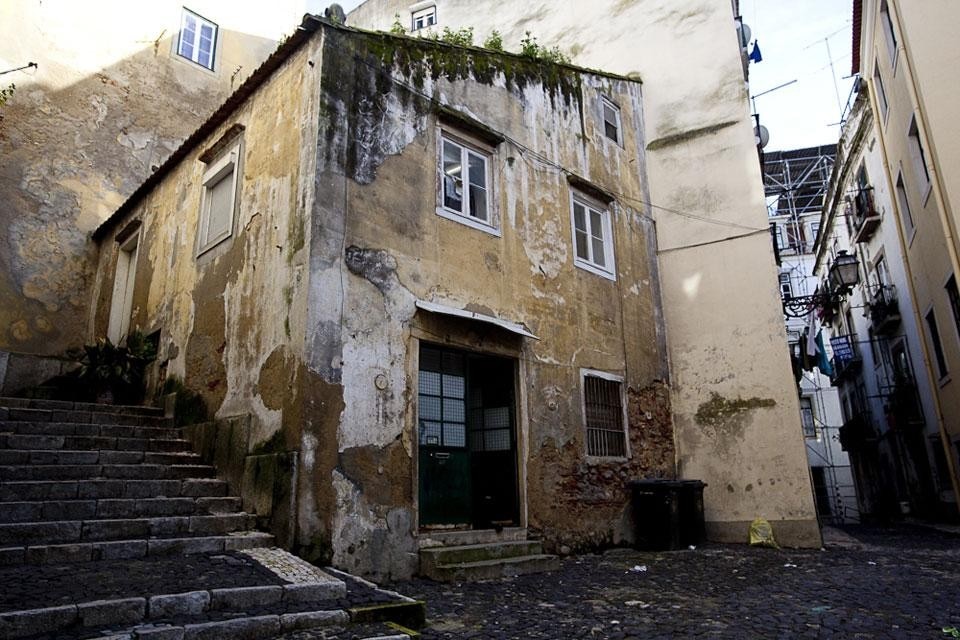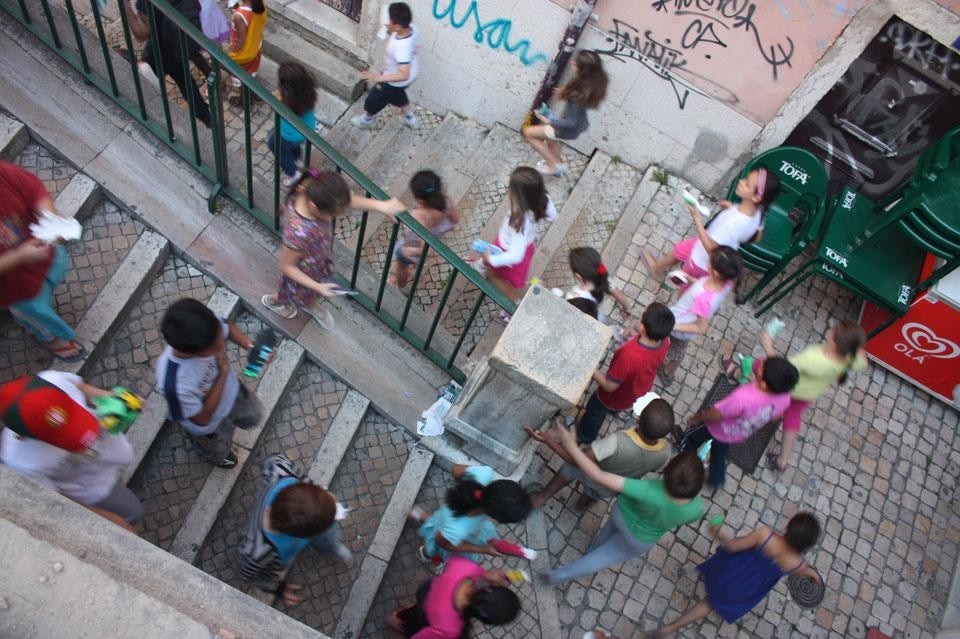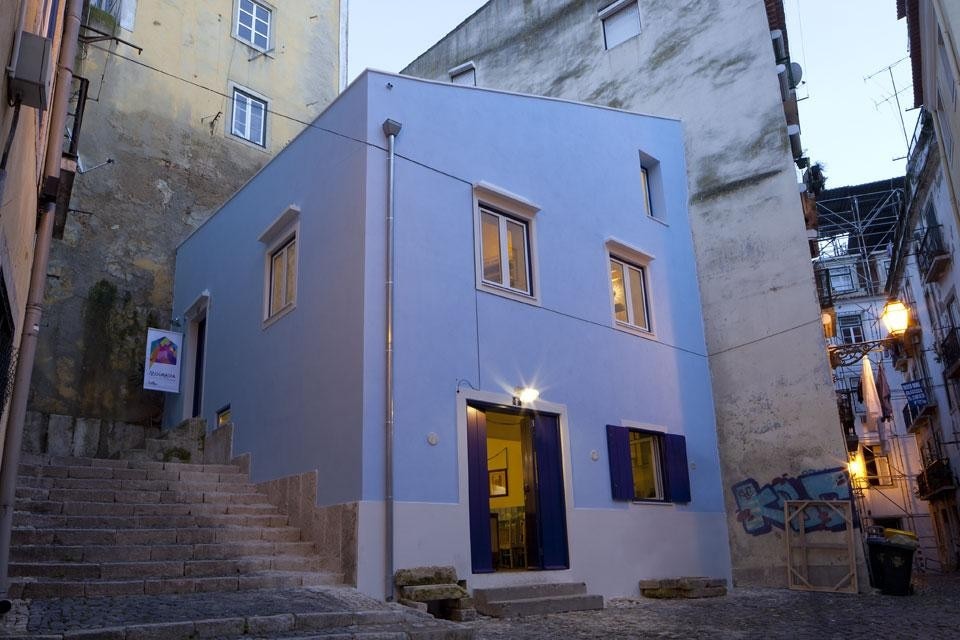Located precisely in the Mouraria neighbourhood, the Manifesto Building proposes a model for urban rehabilitation. The project was developed by Lisbon-based architecture studio Artéria together with non-governmental association Renovar a Mouraria ["Renew Mouraria"]. Recently completed, the renovated building now harbours the Community House of Mouraria, embodying a new cultural and social hub for the neighbourhood.
The story of the Manifesto Building blends itself with the story of Artéria, as it marks their first project as a collective. Conceptually developed by the studio's two partners, architects Ana Jara and Lucinda Correia, it started as a reflection on urban rehabilitation in historical neighbourhoods. The duo's interest in this subject made them develop a manifesto that would reveal itself in the shape of a building, questioning the common assumptions and preconceived notions on rehabilitation — such as it being often considered economically unsustainable. In neighbourhoods such as Mouraria, most of the edifications are what Jara categorizes as "banal buildings," with no special interest to urban promoters, making them cheaper to intervene in, thus partly disproving the "unsustainability" claims.
In Artéria's "script" for the Manifesto Building, they reflected on a model for an integrated urban rehabilitation, encompassing social, cultural and economical interventions. To achieve this holistic approach, the community has to be involved in the process. But also from the architect's perspective, Jara points out that "it's important to understand the dynamics of each area in order to understand what can be the function of the architecture there, and the architect has to establish a connection with the place he or she is designing for."
![Top and above: Artéria, Edifício Manifesto ["Manifesto Building"], Lisbon, Portugal 2012. Photos by Rui Pinheiro Top and above: Artéria, Edifício Manifesto ["Manifesto Building"], Lisbon, Portugal 2012. Photos by Rui Pinheiro](/content/dam/domusweb/en/architecture/2013/02/08/a-manifesto-for-urban-rehabilitation/big_405754_6586_02_IMG_1554_ruipinheiro1.jpg.foto.rmedium.jpg)
![Artéria, Edifício Manifesto ["Manifesto Building"], Lisbon, Portugal 2012. Photo by Rui Pinheiro Artéria, Edifício Manifesto ["Manifesto Building"], Lisbon, Portugal 2012. Photo by Rui Pinheiro](/content/dam/domusweb/en/architecture/2013/02/08/a-manifesto-for-urban-rehabilitation/big_405754_1705_03_IMG_1542_ruipinheiro1.jpg.foto.rmedium.jpg)
Formally, the rehabilitation does not result in spectacular architecture, in a purely formal sense. As Jara and Correia explain, the program and design of the building evolved with time, according to the materials they were able to get sponsorship for
![Artéria, Edifício Manifesto ["Manifesto Building"], Lisbon, Portugal 2012. Photo by Rui Pinheiro Artéria, Edifício Manifesto ["Manifesto Building"], Lisbon, Portugal 2012. Photo by Rui Pinheiro](/content/dam/domusweb/en/architecture/2013/02/08/a-manifesto-for-urban-rehabilitation/big_405754_8595_04_IMG_1360_ruipinheiro1.jpg.foto.rmedium.jpg)
![Artéria, Edifício Manifesto ["Manifesto Building"], Lisbon, Portugal 2012. Illustration by Nuno Saraiva Artéria, Edifício Manifesto ["Manifesto Building"], Lisbon, Portugal 2012. Illustration by Nuno Saraiva](/content/dam/domusweb/en/architecture/2013/02/08/a-manifesto-for-urban-rehabilitation/big_405754_7156_05_local1.jpg.foto.rmedium.jpg)

![Artéria, Edifício Manifesto ["Manifesto Building"], Lisbon, Portugal 2012. Model Artéria, Edifício Manifesto ["Manifesto Building"], Lisbon, Portugal 2012. Model](/content/dam/domusweb/en/architecture/2013/02/08/a-manifesto-for-urban-rehabilitation/big_405754_3341_07_maquete1.jpg.foto.rmedium.jpg)

![Artéria, Edifício Manifesto ["Manifesto Building"], Lisbon, Portugal 2012. Left, during construction. Right, the completed building. Photo by Rui Pinheiro Artéria, Edifício Manifesto ["Manifesto Building"], Lisbon, Portugal 2012. Left, during construction. Right, the completed building. Photo by Rui Pinheiro](/content/dam/domusweb/en/architecture/2013/02/08/a-manifesto-for-urban-rehabilitation/big_405754_3864_09_obra1.jpg.foto.rmedium.jpg)


